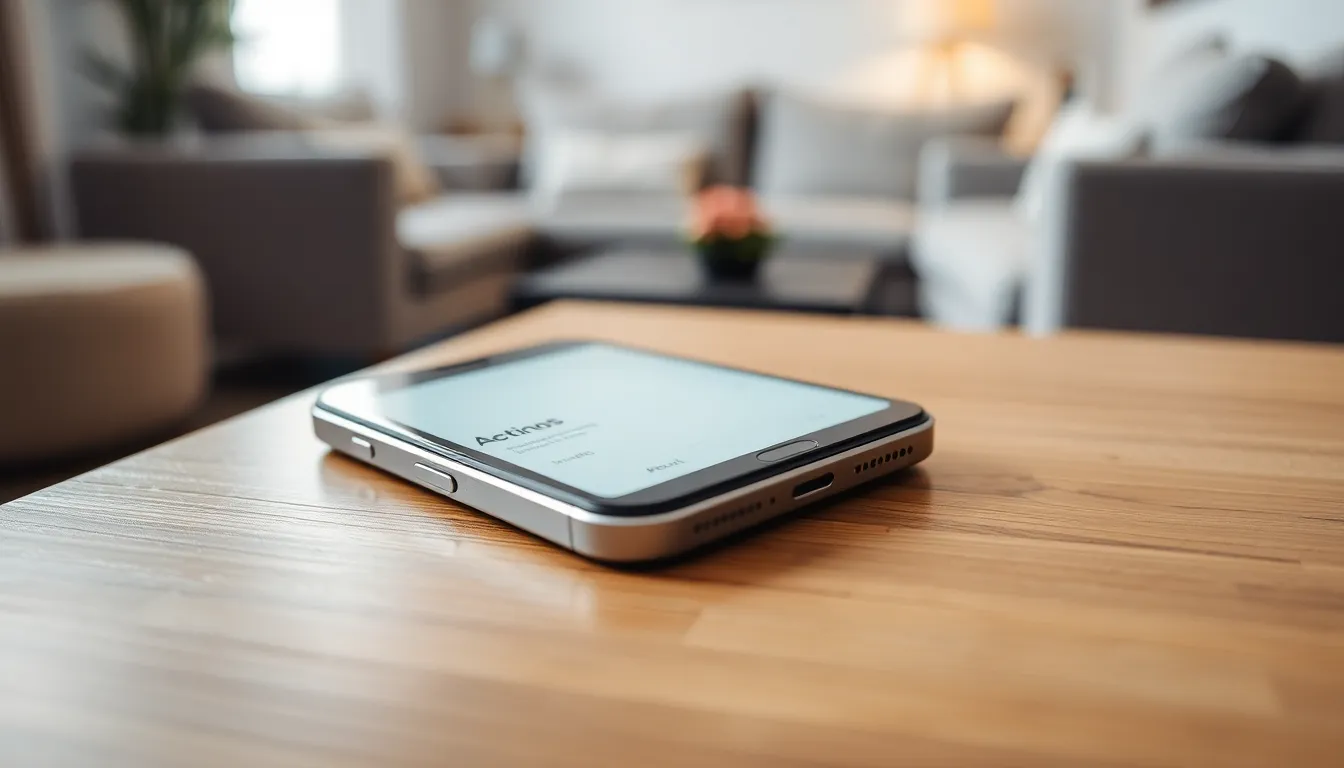Table of Contents
ToggleWondering how old your iPhone SE is? You’re not alone. Many users find themselves scratching their heads, trying to remember if their trusty device is a vintage model or just a few years shy of being a tech dinosaur. With all the updates and new releases, it’s easy to lose track of time in the fast-paced world of smartphones.
Fear not! Unearthing your iPhone SE’s age can be as simple as a few taps on the screen. Whether you’re looking to sell it, trade it in, or just impress your friends with your tech-savvy skills, knowing its age can help you make informed decisions. Let’s dive into the fun and slightly nerdy world of iPhone SE age discovery, where you’ll not only find out how old your device is but also gain insights that could extend its life.
Understanding iPhone SE Models
Identifying the specific model of an iPhone SE helps determine its age and features. This section covers the three generations of the iPhone SE, providing essential details about each.
iPhone SE (1st Generation)
Released in March 2016, the first-generation iPhone SE combines the design of the iPhone 5S with upgraded internals. It features a 4-inch Retina display, an A9 chip, and a 12-megapixel rear camera. Equipped with Touch ID, users enjoy quick access to their device with a fingerprint. Originally available in 16GB and 64GB storage options, this model’s support for iOS updates has diminished over time as Apple prioritizes newer devices.
iPhone SE (2nd Generation)
The second-generation iPhone SE launched in April 2020, offering a more modern design inspired by the iPhone 8. Equipped with the powerful A13 Bionic chip, it ensures smooth performance for various applications. This model features a 4.7-inch Retina HD display and supports advanced photography with a 12-megapixel camera. Users can choose from 64GB, 128GB, and 256GB storage options, and it remains compatible with the latest iOS versions, making it a popular choice for budget-conscious consumers.
iPhone SE (3rd Generation)
Introduced in March 2022, the third-generation iPhone SE builds on the features of its predecessor. Performance receives an enhancement with the A15 Bionic chip, allowing for improved processing speeds and graphics capabilities. Like the previous models, it retains a 4.7-inch Retina HD display and a 12-megapixel camera. Users enjoy choices of 64GB, 128GB, or 256GB storage options, additionally benefiting from 5G connectivity for faster download speeds. Its support for current iOS updates ensures longevity in the evolving smartphone ecosystem.
How to Check the Age of Your iPhone SE

Determining the age of an iPhone SE requires simple steps. Users can find this information within their device or through Apple’s website.
Using the Settings App
Accessing the age through the Settings app is straightforward. Navigate to Settings then General and select About. Locate the Model Name and the Model Number here. The model number can reveal which generation the iPhone SE belongs to. Compare the model number with Apple’s official listings to establish the exact release date. It’s important to note that the first-generation model ends with an F, while the second-generation model starts with a M, and the third-generation model starts with a N.
Checking the Serial Number
Finding the serial number also clarifies an iPhone SE’s age. Tap Settings then General and select About to view it. The serial number serves not only to verify warranty status but also to date the device. Users can enter this number into Apple’s Check Coverage page for detailed information. The webpage provides the model identifier and the purchase date, helping to pinpoint the iPhone’s age accurately. This method confirms whether the device is still eligible for support or repairs based on its purchase timeline.
Factors That Affect iPhone SE Age
Understanding factors that affect the iPhone SE’s age provides essential insights about the device. Key elements include release dates and software updates.
Release Dates
Release dates significantly influence how old an iPhone SE is. The first-generation model launched in March 2016, while the second-generation debuted in April 2020. March 2022 marked the arrival of the third-generation iPhone SE. Owners can determine their device’s generation by matching the release date with their device’s model number. Each generation offers distinct features that impact longevity and support.
Software Updates
Software updates play a crucial role in an iPhone SE’s lifespan. The first-generation model gradually lost support for the latest iOS versions over time, while the second-generation continues to receive updates regularly. Users of the third-generation enjoy compatibility with the most current iOS. Tracking software updates provides clarity on performance and security, directly correlating with the device’s age and functionality. Regular updates ensure the iPhone SE remains relevant within the smartphone ecosystem.
Importance of Knowing Your iPhone SE Age
Understanding the age of an iPhone SE informs users about its capabilities and limitations. Recognizing the release date and model generation also helps in decision-making about upgrades or repairs.
Performance Considerations
Performance varies between the generations of iPhone SE. The first-generation model, with its A9 chip, faces challenges running resource-intensive apps. In contrast, the second generation, equipped with an A13 Bionic chip, delivers much smoother performance. Users of the third generation enjoy even greater advantages, thanks to the A15 Bionic chip. Knowing the specific generation assists users in evaluating if their device can handle the latest apps or demanding tasks effectively. Devices older than three years may show signs of sluggishness, making it essential to assess performance capabilities.
Compatibility with New Features
Compatibility with new features significantly impacts the usability of an iPhone SE. Each generation supports different features based on its hardware capabilities. The first generation lacks essential features found in more recent models, such as 5G connectivity. Users of the second-generation model can access advanced camera options, yet the third generation offers even more enhancements, like improved machine learning capabilities. Users wanting the latest iOS features may find themselves limited by the lower generations. Understanding these compatibilities helps users determine the need for an upgrade to enjoy newer functionalities.
Determining the age of an iPhone SE is essential for users looking to maximize their device’s potential. By understanding the generation and its features users can make informed decisions about upgrades or repairs. Knowing whether the device is a first, second, or third generation helps in assessing its performance capabilities and compatibility with the latest software updates.
With simple steps outlined in the article users can easily find their iPhone SE’s age and ensure they’re making the most of their technology. This knowledge not only enhances user experience but also empowers them in the ever-evolving smartphone landscape.




